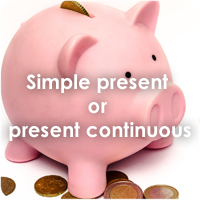Het arrangement 5.4 Saving money - hv12 is gemaakt met Wikiwijs van Kennisnet. Wikiwijs is hét onderwijsplatform waar je leermiddelen zoekt, maakt en deelt.
- Auteur
- Laatst gewijzigd
- 11-05-2025 19:22:38
- Licentie
-
Dit lesmateriaal is gepubliceerd onder de Creative Commons Naamsvermelding-GelijkDelen 4.0 Internationale licentie. Dit houdt in dat je onder de voorwaarde van naamsvermelding en publicatie onder dezelfde licentie vrij bent om:
- het werk te delen - te kopiëren, te verspreiden en door te geven via elk medium of bestandsformaat
- het werk te bewerken - te remixen, te veranderen en afgeleide werken te maken
- voor alle doeleinden, inclusief commerciële doeleinden.
Meer informatie over de CC Naamsvermelding-GelijkDelen 4.0 Internationale licentie.
Aanvullende informatie over dit lesmateriaal
Van dit lesmateriaal is de volgende aanvullende informatie beschikbaar:
- Toelichting
- Deze les valt onder de arrangeerbare leerlijn van de Stercollecties voor Engels voor havo en vwo, leerjaar 1 en 2. Dit is thema 5 'Shopping'. Het onderwerp van deze les is: Saving money. Deze les gaat over geld besparen. Bij de leesopdracht wordt het voordeling shoppen behandeld en bij de luisteropdracht gaat het over het begrijpen een video over het maken van een boodschappenlijstje. De grammaticaopdracht gaat over de present continuous en de simple present.
- Leerniveau
- VWO 2; HAVO 1; VWO 1; HAVO 2;
- Leerinhoud en doelen
- Engels;
- Eindgebruiker
- leerling/student
- Moeilijkheidsgraad
- gemiddeld
- Studiebelasting
- 1 uur 40 minuten
- Trefwoorden
- arrangeerbaar, boodschappenlijstje, engels, geld besparen, hv12, present continuous, saving money, simple present, stercollectie, voordeling shoppen




 Clothes shopping on a budget
Clothes shopping on a budget
 To be able to do all the assignments correctly, you need to know some words and sentences.
To be able to do all the assignments correctly, you need to know some words and sentences.
 Weet je nog hoe het zat met de present continuous? Daarmee zeg je dat iets nú aan de gang is. In het Nederlands zeggen we dan vaak iets als: 'Ik ben aan het...'. Een voorbeeld van de present continuous is: I am reading a book. (Ik ben een boek aan het lezen.)
Weet je nog hoe het zat met de present continuous? Daarmee zeg je dat iets nú aan de gang is. In het Nederlands zeggen we dan vaak iets als: 'Ik ben aan het...'. Een voorbeeld van de present continuous is: I am reading a book. (Ik ben een boek aan het lezen.)



